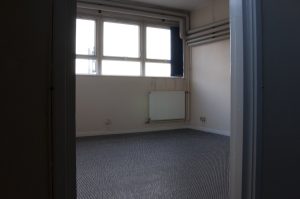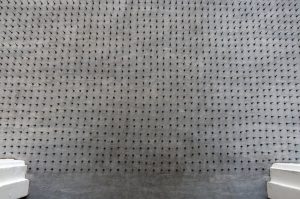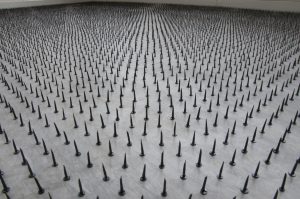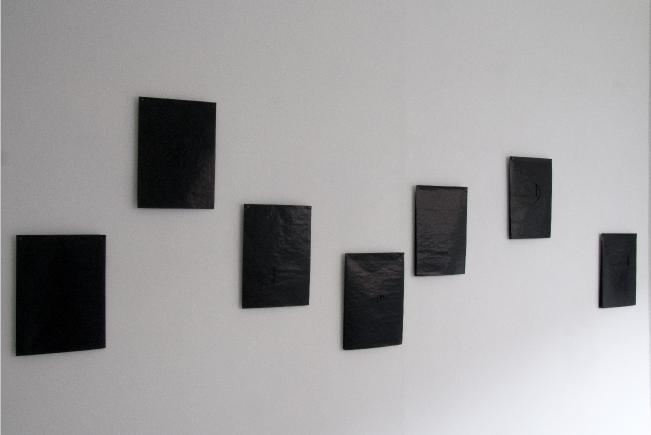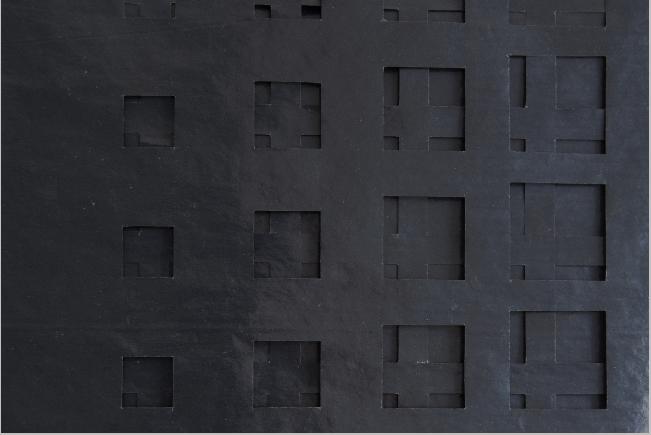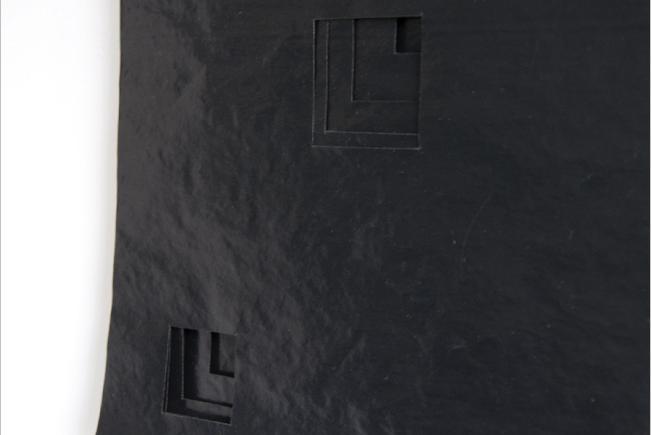Jaimini Patel is an artist whose work explores the agency of materials through boundaries, systems, and performative actions.
In spring 2014, The Art House proudly presented new installations by Patel. Her works, Retention and Laid Bare, were exhibited at Fell House and The Art House in Wakefield, following her month-long Sometimes Residency in March 2014.
At Fell House, a former West Yorkshire police headquarters, Patel transformed the basement into a site of quiet tension with Laid Bare. Hundreds of blued tacks were meticulously arranged on top of carbon paper spread across the floor. These tacks, typically used to fasten carpets and upholstery, had no practical purpose in this space. Instead, they were painstakingly positioned in what might be considered an absurd yet meditative undertaking.
The tacks formed a grid that initially appeared precise and orderly. However, closer inspection revealed subtle imperfections: tremors in their placement and irregularities in the tacks themselves. Despite their mass production, each tack bore unique flaws, challenging the idea of uniformity.
Balancing precariously on their heads, the tacks seemed both sharp and vulnerable, as if they could collapse and scatter at any moment. Their sharp presence might have deterred entry, yet their fragility softened the sense of threat. Exposed and stripped of their usual function, these everyday objects were transformed into subjects for scrutiny. Laid Bare invited audiences to reflect on the tension between individuality and collectivity, as well as the hidden existence of objects often taken for granted.
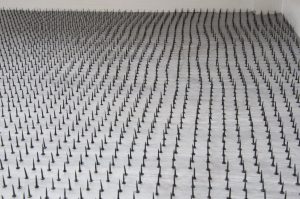
At The Art House, Patel exhibited Retention, a work centred around carbon paper – a material that evokes a slower, analogue way of working. Once cutting-edge technology, carbon paper allowed people to make multiple copies without repeating tasks. Today, it is seen as outdated, though it continues to be used in specific contexts such as tattooing, dentistry, and in prisons.
Carbon paper captures and retains traces of every use, layering impressions over time. Each new mark obscures previous ones, merging unrelated information into a single sheet. Often discarded after serving its purpose, carbon paper is rarely considered beyond its function.
In Retention, Patel stacked layers of carbon paper, creating a composition that revealed glimpses of what lay beneath. These layers hinted at hidden details, inviting viewers to imagine the content of earlier impressions. The surface layer dictated how much information could be revealed or obscured, leaving the audience to navigate the boundary between what is visible and what must be inferred.
Through Laid Bare and Retention, Jaimini Patel explored the fragility, impermanence, and layered complexities of materials, inviting us to reconsider the overlooked narratives embedded within everyday objects.
